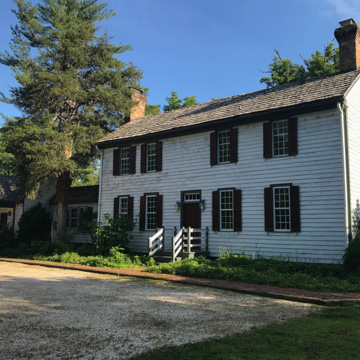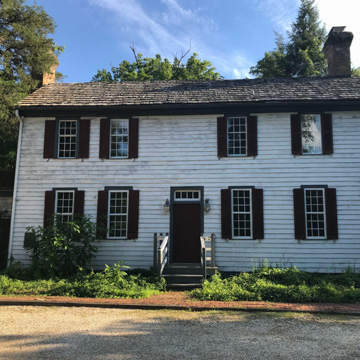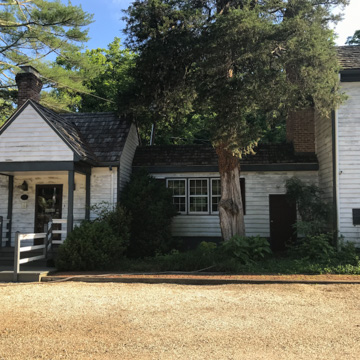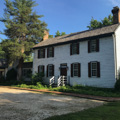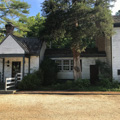The tavern, a survivor of the commercial activity spawned by the transportation routes through the Piedmont, was named for a well-known landmark on the site. The D. S. Tree marked the intersection of the Three Notched Road and the Dick Woods Road, two important routes to the west. The one-room log portion of the structure, built in the mid-eighteenth century, is thought to have been a claims house. In the late eighteenth century, a frame addition converted the small log structure into a two-story, two-room central-hall-plan ordinary. A single-story hyphen connects the tavern to an early-nineteenth-century kitchen on the east. The ordinary continued to serve travelers along the much-traveled road until the mid-nineteenth century, when the railroad and new roads provided alternate routes to the west. The most famous of the tavern's numerous owners was Chief Justice John Marshall, who held the title to the property from 1810 to 1813.
You are here
D. S. Tavern
If SAH Archipedia has been useful to you, please consider supporting it.
SAH Archipedia tells the story of the United States through its buildings, landscapes, and cities. This freely available resource empowers the public with authoritative knowledge that deepens their understanding and appreciation of the built environment. But the Society of Architectural Historians, which created SAH Archipedia with University of Virginia Press, needs your support to maintain the high-caliber research, writing, photography, cartography, editing, design, and programming that make SAH Archipedia a trusted online resource available to all who value the history of place, heritage tourism, and learning.

